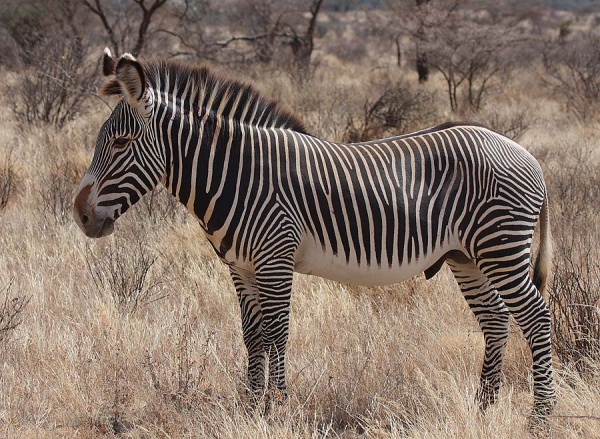Facts About Grevy's Zebra
The Grévy's zebra, also known as the imperial zebra, is the largest and most endangered of the three zebra species, with the other two being the plains zebra and the mountain zebra. Native to Kenya and Ethiopia, these zebras are named after Jules Grévy. They stand out for their distinctive physical traits and behaviors, thriving in semi-arid grasslands and capable of surviving up to five days without water. Their social structure is centered around stallion territories and mother-foal bonds.
First described in 1882, Grévy's zebra belongs to the subgenus Hippotigris. Fossil evidence indicates that their ancestors roamed both Africa and Asia, with the modern species emerging in the early Pleistocene. As the largest wild equines, they are identifiable by their large ears and narrow stripes, which aid in camouflage and predator deterrence.
Grévy's zebras inhabit northern Kenya and parts of Ethiopia, residing in Acacia-Commiphora bushlands and barren plains. Their diet primarily consists of grasses, legumes, and browse. Although they can go without water for up to a week, they will migrate to regions with better water sources during dry seasons. Their natural predators include lions and hyenas, and they also face threats from parasites such as Trichostrongylus.
Behaviorally, adult stallions maintain territories, while mares and non-territorial stallions possess large home ranges. Grévy's zebras communicate through various vocalizations and engage in complex social interactions. They reproduce year-round with a gestation period of 390 days, typically birthing one foal. Foals imprint on their mothers and are especially vulnerable to predators.
The relationship between Grévy's zebras and humans dates back to ancient times, with these zebras historically used in circuses and given as gifts to dignitaries. Currently, the species is endangered, suffering significant population declines due to habitat loss and competition with livestock. Conservation efforts include legal protection, hunting bans, and community-based initiatives. Despite these efforts, they continue to face threats from habitat destruction and invasive species that impact their food supply.

 Somalia
Somalia